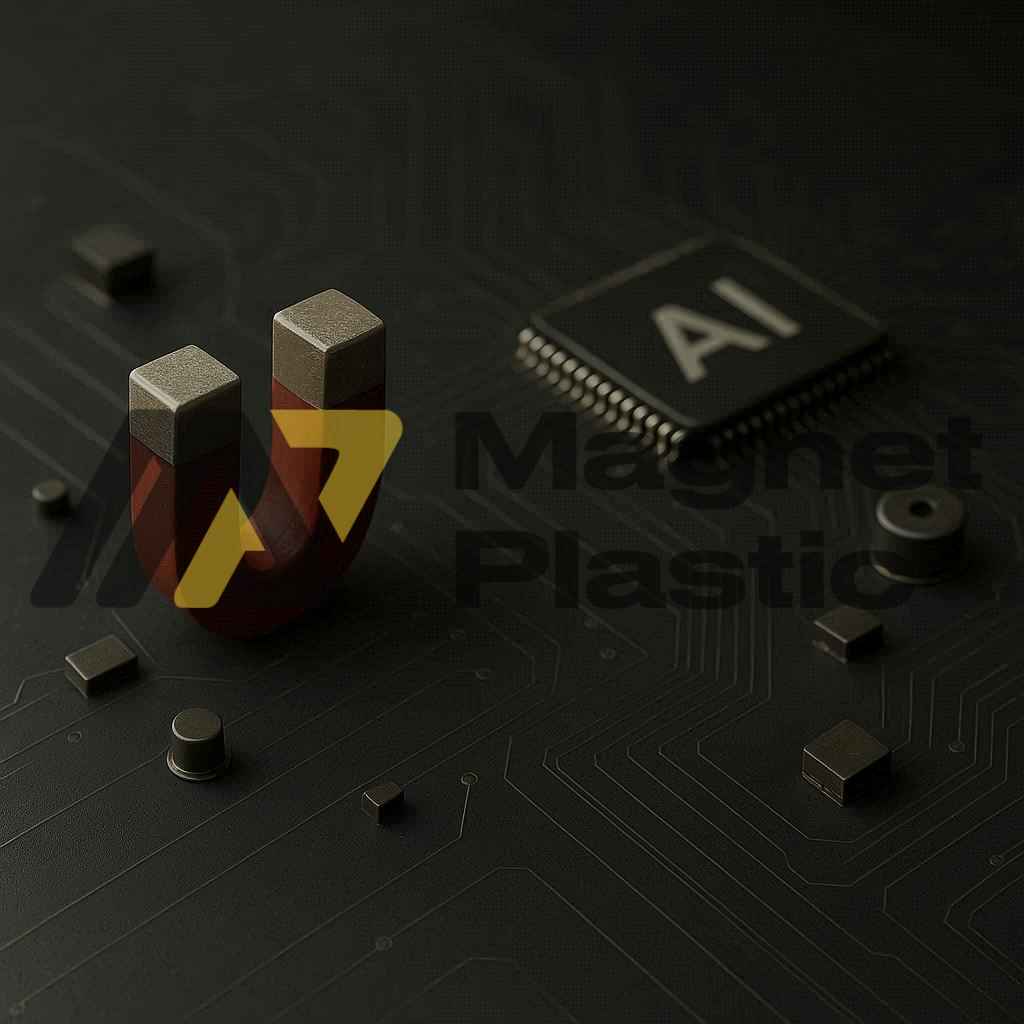The Role of Magnets in Physical Artificial Intelligence (AI Hardware)
Magnets: The Hidden Power of AI Hardware
Magnets are not just industrial tools. Today, they are shaping the next generation of artificial intelligence. In AI hardware, magnetic materials are helping systems think, learn, and process data faster than ever. Unlike traditional silicon chips, magnetic devices can store and process information using the spin of electrons. This approach, known as spintronics, is changing how computers work.
Neuromorphic Chips and Magnetic Materials
Neuromorphic computing tries to imitate the human brain. It connects millions of artificial neurons and synapses that exchange information efficiently. Magnetic materials make this possible. For example, magnetic tunnel junctions (MTJs) and spin-transfer torque (STT) devices act like biological neurons. They store data and process signals using minimal energy.
Moreover, magnetic materials keep their state without constant power. Therefore, AI chips can remember information even when turned off. This feature, called non-volatility, reduces energy waste and improves the durability of devices.
Advantages of Magnetic AI Systems
The combination of AI and magnetism offers many advantages. First, speed. Magnetic signals move faster than electric currents. Second, efficiency. Magnetic computing uses less energy than traditional transistors. And third, scalability. Magnetic elements can be smaller than silicon ones, allowing higher data density.
In addition, magnets improve resilience. They resist radiation and temperature changes, which makes them perfect for space or defense applications. As a result, magnetic AI systems can operate in extreme environments where traditional electronics fail.
Towards a Magnetic Future for Artificial Intelligence
Research centers and companies worldwide are investing in spintronic processors. These new chips combine magnetic and electronic properties to accelerate neural network operations. For instance, IBM, Samsung, and Toshiba are already exploring magnetic memories for next-generation AI accelerators.
In the future, magnet-based processors may become the heart of sustainable artificial intelligence. Their low power consumption and high stability could solve one of AI’s biggest challenges: energy efficiency.
Furthermore, by mimicking the adaptability of the human brain, magnetic materials could enable machines to learn continuously, with minimal energy cost.
Conclusion
Magnets are redefining how we design and understand AI hardware. From neuromorphic chips to spintronic devices, magnetic materials are paving the way for faster, greener, and smarter technologies.
As innovation continues, the connection between magnetism and artificial intelligence will become stronger, turning magnetic computing into one of the key pillars of the AI revolution.
